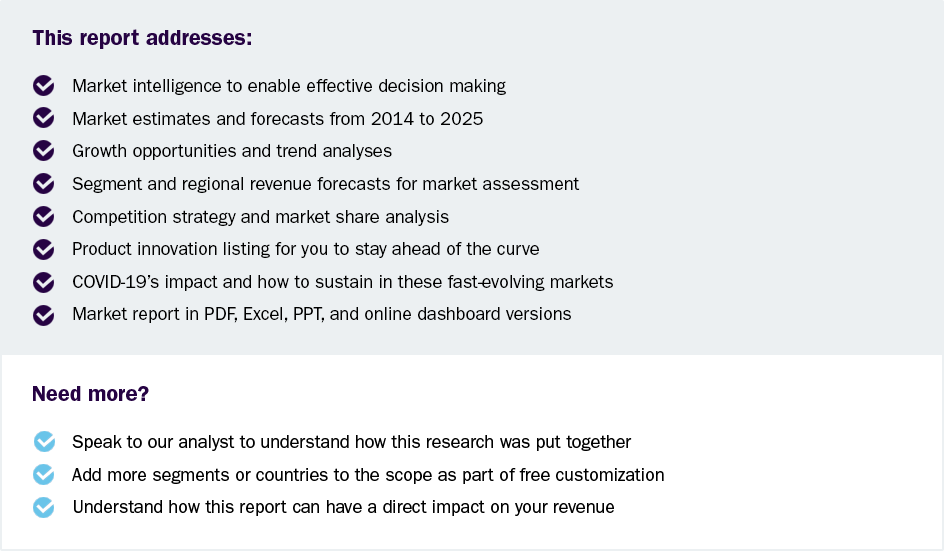Self-healing Materials Market To Reach $14.60 Billion By 2033
Self-healing Materials Market Growth & Trends
The global self-healing materials market size is expected to reach USD 14.60 billion by 2033, registering a CAGR of 21.1% from 2025 to 2033, according to a new report by Grand View Research, Inc. The surged construction spending in the emerging economies of the Middle East and Asia Pacific, owing to substantial industrial and economic development in them, coupled with their population expansion, is anticipated to fuel the demand for self-healing materials in these regions over the forecast period.
Self-healing materials are a recent development in the field of building and construction materials, as they are capable of repairing themselves following damage or exposure to environmental conditions. These materials are designed to enhance the durability and shelf life of coatings, composite materials, concrete, and asphalt.
Additionally, self-healing materials are significant in development of organic electronics, with several end-use applications, including new integrated and portable devices. With the development of stretchable, printable, and implantable electronics, self-healing organic field-effect transistors (OFETs) are gaining increasing importance in the market. Hence, with increasing demand for renewable energy and rapid development in the field of organic electronics, market demand for self-healing materials is also expected to grow in the coming years.
However, high cost of these materials acts as a restraint in the growth of a market. Self-healing materials such as polymers, metals, ceramics, and their composites can fully or partially restore their original properties after being damaged during operational use. These materials are costlier than conventional materials owing to the expensive technological processes involved in their manufacturing. Moreover, the further processing of self-healing materials into final products is also expensive.
Major self-healing technologies are divided into autogenous healing, chemical additives-based healing, and bio-based healing. Autogenous healing is concerned with the ability of a material to repair cracks automatically. Chemical additive-based healing depends upon a series of chemical reactions. Reaction mainly consists of two healing agents, namely capsules and vascular tubes, which, when broken down, release chemical agent that repairs cracks automatically. Third, most technology bio-based healing involves the incorporation of bacteria, which induces calcium carbonate and builds up the seal against crack-related water ingress.
Self-healing materials market is characterized by integration across the two stages of value chain. Few of the manufacturers are involved in the production of raw materials as well as well as captively consume these materials for the production of self-healing materials. This strategy aids companies in regulating the quality of raw materials that ensures premium quality products. It also helps in mitigating the effects of price volatility and any disruption in supply chain.
 Request a free sample copy or view report summary: Self-healing Materials Market Report
Request a free sample copy or view report summary: Self-healing Materials Market Report
Self-healing Materials Market Report Highlights
-
The coatings segment led the market with the largest revenue share of 28.17% in 2024. The concrete segment is expected to grow at the fastest CAGR of 22.9% over the forecast period.
-
The reversible polymers segment led the market with the largest revenue share of 33.76% in 2024. The microencapsulation segment is expected to grow at the fastest CAGR of 23.0% over the forecast period.
-
The building & construction segment led the market with the largest revenue share of 35.54% in 2024. The electronics & semiconductors segment is expected to grow at the fastest CAGR of 21.9% over the forecast period.
-
Asia Pacific dominated the self-healing materials market with the largest revenue share of 30.15% in 2024.
Self-healing Materials Market Segmentation
Grand View Research has segmented global self-healing materials market on the basis of product, technology, application, and region:
Self-healing Materials Product Outlook (Revenue, USD Billion, 2021 - 2033)
-
Concrete
-
Coatings
-
Polymers
-
Asphalt
-
Fiber-reinforced Composites
-
Ceramic
-
Metals
Self-healing Materials Technology Outlook (Revenue, USD Billion, 2021 - 2033)
-
Reversible Polymers
-
Microencapsulation
-
Shape Memory Materials
-
Biological Material Systems
-
Others
Self-healing Materials Application Outlook (Revenue, USD Billion, 2021 - 2033)
-
Energy generation
-
Building & Construction
-
Automotive & Transportation
-
Electronics & Semiconductors
-
Medical
-
Others
Self-healing Materials Regional Outlook (Revenue, USD Billion, 2021 - 2033)
-
North America
-
U.S.
-
Canada
-
Mexico
-
-
Europe
-
Germany
-
UK
-
France
-
-
Asia Pacific
-
China
-
Japan
-
India
-
-
Central & South America
-
Brazil
-
-
Middle East & Africa
List of Key Players in the Self-healing Materials Market
-
The Dow Chemical Company
-
Covestro AG
-
High Impact Technology, LLC
-
Huntsman International LLC
-
Michelin Group
-
MacDermid Autotype Ltd.
-
Akzo Nobel N.V.
-
Evonik Industries Corporation
-
BASF SE
-
NEI Corporation

